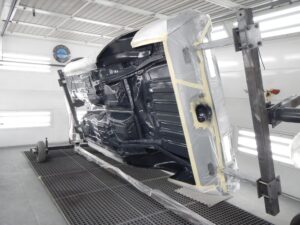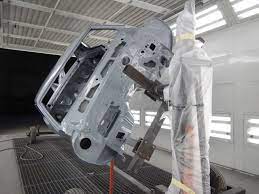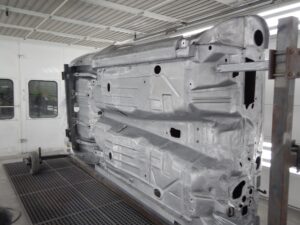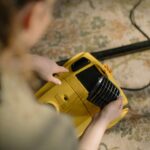From Frame to Finish: The Role of Automotive Restoration Near Me in Car Chassis Restoration
Ensuring the foundation of vintage over-performance: the importance of chassis.
Not many things will make a car enthusiast pound the heart harder than reaching a speed that is just perfect after putting many hours on the bones of the old classic. However, when it comes to getting that most sought after combination of reliability and oomph, it is undeniable that car chassis restoration should be brought to the fore. The chassis is the skeleton that talks softly, knowing how your most beloved ride accepts the hugs of the road, reacting to the moments of hammer down and enduring jarring and turns. Forget the frame and even the most beautiful restoration can not prevent a car to handle carelessly or, even worse, to collapse.

A few of these people might think that a glistening body is a car that works well. The fact is, that years, nine times out of ten, have left rust, crack and concealed slacks beneath that shiny varnish. Aging frame will not be able to maintain all components in their correct position as intended by the engineers. All at once, panel gaps widen, the door alignment goes bad and you think you are engaged in a losing battle with suspension tuning. Cases have even occurred, where little frame kinks and bends caused total meltdowns on the interstate- tales enough to make shoulders curl of the mild steel lover.
Weaknesses of Old Frames In Common
Fact: Not every classic chassis is the same. Both full box frames, X-members and ladder designs have their own peculiarities and weaknesses. The ladder frames that were popular in American classics such as the Chevy Bel Air are great at straight-line forces and wring into something like a pretzel as the side loads pile up. British unibody designs on the other hand are light weight but can collect more rusts than a sponge in the beach. Bad crossmembers, broken outriggers and rotten mounts can give a car a very bouncy feel on the road that no horsepower will conceal.
A frightening statistic: Almost two out of every three of the unrestored classics you see running the roads today have some sort of structural compromise either because of rot, weld fatigue or distortion caused by accident of which repair was not reported. Every one of them preconditions the driveline malpositioning, suspension wear, and even weird tire patterns which are detested by some mystery mechanics to specify.
Interventions: Building the Backbone
I guess it is time to recover what time tried to take. Metal fatigue and rust can be intimidating foes to be sure but repair techniques are so advanced in the current day compared to those done in the past. This is what experienced restorers go to:
Boxing and Plating

Open C-section frame rails that were common on older trucks and muscle cars are a big beneficiary of boxing. That is, it is welded in metal, so-called plates, to seal the open sides, similar to strengthening a cheap cardboard box into a steel safe. The payoff? More tautness, with no softer corners and different suspension geometry, and driving like a new car at the kick. However, you must keep welding-in-planning—the fitment of all the joints must be tight and have surge protection such that hotspots are avoided.
Crossmember Upgrades
Just picture the frame being a tale suspension bridge. The twisty loads allow the ends to flop due to lack of strong crossmembers. Body roll can be tamed by stiffening up (increased thickness) and turning stiffer materials or gussets can be added to tighten up steering response. Both new-fangled chromoly and mild steel are used here, however cost, originality and safety are all a part of the equation.
Rust Repairing and Surfacings
Before making feel strength, seek after every speck of rust. Chemical dips and blasting go down to crevices of decades deep. A common ruse: once sandblasted, a metal coating of high zinc content epoxy primer is used to seal metal halts corrosion to a snail-paced slumber. A few of the shops will also choose media blasting, walnut shells or soda so as not to warp any of the delicate spots–a piece of advice worth the weight of gold to anyone with special coachwork to retain.
Welding Magic
Welding is a distinction between weekenders and craftsmen. Battle is an aspect in frame repair that Mig, Tig and even Stick welders view in action. Good welding can be described as a first-rate stitch, that is, strong, clean, and almost inaudible, after grinding. Alignment could and should always be checked in the course of the job, as a twisted frame is really bad news on the road and very dangerous to paint coatings.
Refinishing Advice to create Longevity
The frame that is straight, solid, and should be finished in the same manner so it will stand the passage of time. Most vow a final urethane or epoxy coat of finish after the blasting and priming has been done. POR-15 and Eastwood Chassis Black are popular because they are known to resist stones chips and chemicals. Remember to spray with cavity wax around such areas as inside sections of box, spray here on the inside, again shoving spray through in spots you hope never to see again once the car comes back together.

To those who are nuts about being unique, color-matching OEM finish is possible using current paint codes and suppliers. Probably, you will cheat a bit, however, with contemporary corrosion guard that will not rust out in a hundred years like the factory can.
Alignment and Assembly: Coming Full Circle
Full assembly is vital in providing final results even in the case of a bulletproof chassis. Period-accurate bushings, new hardware torqued to spec, and time spend consulting original assembly manuals do away with squeaks, groans and expensive redos.
Well adjusted mount shimming will also anticipate the flex in the body and maintain tight door gaps. Make factory geometry duplicates by using angle finder and strings then bolt everything down. When money is not an issue a laser jig in a professional frame shop will shave it in to millimeter precision.






